Tech for Life #6: Playstation Vue. The Future of Cable TV.
I hate cable. I hate how every time I turn it on a pop up tries to get me to buy on-demand. I hate that while HD is the standard, standard definition channels still exist and drown me in a mile long channel guide. I hate that there’s 1800 channels and I can never find anything to watch. I hate the outdated, fuzzy GUI interface. I hate the menu system, which is slow and illogical. I hate cable boxes that have the processing power of a calculator and I’m forced to pay $9.95 per month to house them. I. Hate. Cable.
About a year ago Verizon switched the cursor default when you turned on the cable box. Instead of starting at DVR (which makes sense), they moved it up to On Demand because screw you. I imagine the decision to make that change went something like this:
“What if we had it where they start at On Demand?”
“What do you mean, Bob?”
“They expect that––because they pay $100 a month––we’d let them dive right into live television or their DVR, right?
“Yes.”
“Well, what if instead we use muscle memory against them, so that when the turn on the TV and press ‘enter’––thinking they’ll dive into their DVR––they’ll go into On Demand?”
“I’d think that’d piss them off, Bob, and they’d think we’re being manipulative and kinda dicks.”
“But what if, in their anger, they say ‘fuck it’ and order a movie?”
(pause) “Go on . . .”
The horrible user experience has completely turned me against cable. Instead, I watch Netflix, Amazon Video, a little bit of Hulu, and rent movies. I only go to cable for sports.
Until now.
Recently Verizon was bought out by Frontier. And while I can only imagine how difficult it is for that transition, I’m a customer and that matters too. I love Verizon Fios Internet but (as stated above) their cable service . . . not so much.
But path of least resistance often wins and I’m a creature of habit. A few weeks ago my contract with Verizon was up so I called Frontier to renew. We scheduled the time for the tech and overall, it was a pleasant experience. But on the scheduled day, the tech didn’t show. I happened to speak to my cousin who lives a few miles away. His Frontier tech didn’t show up twice (as an aside, my cousin called the CEO’s office to complain and the CMO of Frontier called my cousin directly and immediately rectified the situation. So they mean well.).
But when I called Frontier they couldn’t find my order. It was as if my forty-five minutes on the phone with them a few weeks prior had never happened. And when I rebuilt the order for the channels I wanted, for some reason it was 30 bucks more than what I was quoted the first time.
So, enough. I had read about Playstation Vue. I use over-the-top services (Netflix, HBO Go, Amazon Video) all the time and prefer them. I decided to give Playstation Vue a shot.
My verdict? If you have the bandwidth, Playstation Vue is revolutionary.
Here’s why:
Interface
Once you understand the logic, everything Vue does makes sense. It turns cable into a Netflix-like experience, complete with thumbnails. You can look at a channel guide (a la old school cable) and low and behold, the channels are in alphabetical order. What a concept!
But it’s when you start using ‘favorites’ (favorite channels––or especially––favorite shows) that you are re-introduced to the amazing content available on cable TV, which has been buried and bloodied by the shitty-ass interface we’ve dealt with for years.
When you ‘favorite’ a show (I have little kids, so let’s use “Steven Universe” on Cartoon Network as an example.) it automatically records the shows via a cloud DVR and also shows you the episodes available On Demand. Additionally, it recommends shows based on your favorites across networks. I’ve been introduced to programs I would have never checked out. And by favoriting them, even more shows pop up.
But now, it’s all right there. You turn on Playstation Vue, go to “Favorite Shows” and tiles of your favorite programs appear for you to select. It’s awesome.
Profiles
You can also create profiles for each user. I haven’t done this because I’m the only one that flips on the television, but in essence, what I want to watch and what my kids want to watch is quite different. This allows each person to customize their favorite channels and shows.
Picture Quality
I purchased an Amazon Fire TV and have it plugged in to ethernet. The picture quality is very good. When I first got Fios, I thought the picture quality was amazing but over time it seemed to have gotten softer (possibly due to added compression). With fast Internet, Playstation Vue looks better.
No More Cable Boxes.
In addition to the Amazon Fire TV, I purchased two Amazon Fire sticks. I plugged them into our TV’s around the house, downloaded the Playstation Vue app, typed in my username and password, and the dishes were done: cable TV in my bedroom and garage. The only downside to the Fire Sticks is that they’re a little laggy (they’re wifi and part of it could be that I have old wifi hubs). But even with that, they’re great.
Channels
There are three packages. I chose Core, their mid-tier package, which is $45.00 a month and includes 75 channels, of which 65 are one’s we expect and are familiar with and the other 10 are regional sports channels. I’m a huge UFC fan so I needed Core for the Fox Sports channels.
We’re used to scrolling through a million channels, but how many of those do we ever use? For me, the Core package has everything I want. Now that I can easily sift through and find content, it’s amazing how much is out there. Before, I wouldn’t bother.
Having said that, if you are a sports nut and need something like NFL Red Zone, you may have to search elsewhere.
The Conclusion
I wonder if the cable companies look at Playstation Vue with fear or indifference. If it’s indifference, they’re idiots. The case study? Blockbuster Video. When Netflix emerged with their mail-order DVD service, all Blockbuster had to do was match it. That’s it. They had majority marketshare and if they had combo’d the in-store with mail order, Netflix would have vanished back into the ether––just another start-up with a good idea banished by the goliath who had more resources. But instead, Blockbuster did nothing until their final gasps. And now they’re gone.
If the cable companies don’t get their act together, they’ll be in the same boat. Playstation Vue is revolutionary. It makes me want to watch TV again. The $45.00 a month is a bargain for all the content it offers and the intelligence of its design. It is a compliment to programs, a search engine that puts the best that television has to offer right at your fingertips.
Before Playstation Vue, I would have said that cable TV is a dying industry. But it’s not – it’s just evolving. Repackaged into an elegant and modern interface, cable TV’s great. And it’s made me realize that networks will survive and so will commercials. It’s the cable providers that may go extinct.
Playstation Vue . . . get it!
Gun Control: A Letter To My Congressman & Senators
(The children and adults murdered at Sandy Hook, never to see another day. Image from Dailymail.co.uk)
To Congressman Lieu, Senator Boxer, and Senator Feinsten,
I’m sure I’m not the only one writing today. The mass shootings in the country have reached a point where my wife and I genuinely discuss moving to another country, because the thought of our children heading off to school and not coming back has become a stark reality that we must face. We are now in a time where safety is a delusion. It is a fantasy we use to function through our daily lives. Sandy Hook, San Bernardino, and the other three hundred plus shootings are proof of that.
We have reached a level of insanity only matched by our government’s inaction. When the two towers fell, there was sweeping change. In our city, people can no longer smoke cigarettes even on the streets. I have to show an ID to buy Sudafed. But we keep throwing our arms in the air saying “What can we do? It’s the 2nd Amendment…” when we’ve amended the constitution to abolish slavery and allow women the right to vote.
Our forefathers were not omniscient, nor gods. They could not have predicted the advancement of firearms, nor the population density of our country today. Instead, they were white men (many, slave owners) who had witnessed a tyranny and created a document with checks and balances, and that was, in fact, malleable, so that this country could offer its people opportunity, and above all, fairness. The right to pursue happiness.
The proliferation of guns throughout our country has become our new tyranny. How many thousands of people have to die over the next few years so others can keep a piece of steel with a barrel in their lockbox? How many hundreds of thousands of families and friends have to mourn a day each year for the rest of their lives, because someone they love was ruthlessly taken away?
What the hell is wrong with our representatives? Is the NRA that powerful? Have we elected cowards? Yes, our representatives must represent their constituents, but they also must lead to a better way. They must bring solutions to hard problems. And they must protect the marginalized groups with no voices, when the majority doesn’t care.
The irony of this is that I’m a gun owner, and I use to be a gun advocate. I’d smelt them today if it’d stop one more person from leaving their home and not coming back. One more kid who goes off to school with their too-large backpack swinging side-to-side, only to have a bullet take all of their future from them.
People say there are too many guns, that we can never get rid of all of them. We don’t have to. Too many people live in a world of all or nothing, when most solutions are in-between. We need to introduce scarcity, incentives, and consequences. Going forward, keep the long guns (rifles, shotguns) for hunters and target shooters, but at a 3-shot maximum. No shotgun plug, no high-capacity alternative. No grandfather clause to allow higher-capacity options. Three shots. That is perfectly fine for hunting, and racking a pump shotgun is the universal sound for “get out of my house.”
Introduce a buyback program for all semi-automatic handguns, high capacity magazines, revolver speedloaders, and semi-automatic, magazine-fed rifles and shotguns. In addition to the buyback, offer a tax-incentive for households that can prove they are gun-free.
Introduce a Class II license for those who wish to keep their semi-automatic handguns, high capacity magazines, revolver speedloaders, and semi-automatic, magazine-fed rifles and shotguns. These weapons cannot be sold, other than to the government for buyback at pre-ban fair market value. In addition to yearly, mandatory training, if their weapons are used in a crime by another person, they are an accessory and tried for that crime.
Introduce a law where if a gun is stolen, and the owner doesn’t immediately contact the authorities, they are fined $10,000 or 10% of their cash net worth. If the police determine that the gun wasn’t locked in a gun safe, it’s a felony. If the gun wasn’t locked in a safe, and the gun is used later for a crime, they are an accessory to that crime.
Introduce a law where any Class II weapons or accessories that are found on a person or in their home after the buyback grace period and are not registered, results in $10,000 fine and a felony charge.
We hear about the senseless deaths, we mourn for a few days, but there are no lasting consequences to the population at large. The above ideas make everyone who owns – or wishes to own – a gun, weigh the potential consequence of that ownership. It may not be the end-all solution, but it’s a start.
When our forefathers wrote the 2nd amendment, the most advanced weapons for civilians – pistol or rifle – were single shot, and either black powder or flintlock.
Let’s stop being naive. Let’s stop saying nothing can be done. A lot can be done. We just need representatives with the will and fight to do it.
Tech For Life [TFL] #5: The Thermos Stainless Steel King.
Yes, I usually write about electronics, but sometimes you have to branch out. Like many of you, last July I sifted through Amazon’s Prime Day looking for a rocking deal. I didn’t really find one. But when the Thermos Stainless Steel King popped up, a co-worker – who was much more depressed than anyone should be not finding a deal on an off-brand 40″ television – mumbled “I have one of those Thermos mugs and they’re pretty good.” I drink a $#it ton of coffee, so I pulled the trigger like a boss and dropped 20 bones on it.
When it arrived, I was disappointed. It’s big for a coffee mug. Too bulky for my car’s cupholder, the utility of it immediately came into question. I put it in the cupboard and didn’t use it for a month or so. But then I did.
And it changed my life.
Not really. But it does keep the coffee hot for the entire day, which my CoffeeMate carafe does not. And that’s pretty awesome because now I don’t have to brew a second pot.
So that’s this blog.
Tech For Life [TFL] #4: Everyone Should Own A Porsche Boxster.
That’s right. Not a 911. A Boxster. I don’t care what year.
“But bro! It’s a total chick car!” you say with your baseball cap turned backwards. I’m sure a lot of women like it, but if you think it’s “just” a chick car, you don’t really like cars.
“But bro! It’s a car, for . . . you know. Those kind of dudes.” Gay guys? Again, I’m sure they like them too. A lot of my gay friends are into cars and sports and raising kids and they’re also worried about taxes (and in California, the drought) and other things aside from being gay. But if you say something like that – aside from being, if not homophobic, a parrot perpetuating a very acute stereotype – you don’t get it. And if more gay people have Boxsters, it just reinforces a very positive stereotype: they have taste.
Because we live in a culture that immerses us in lies. We are bombarded every day with messages and images about things that will make us feel better, make us look better, make us better. And almost all of it is bullshit. It makes us jaded. It makes us untrusting. And worse, it makes us blind to the things that are special. There are products – just like people – that are more than the sum of their parts. That are magic. And the Boxster is one of those things.
And I speak from experience. Here are my last four cars:
- 2002 Porsche Boxster
- 2006 BMW 530i
- 2005 Porsche 911 (first year of the 997)
- 2008 BMW M5 (my current ride)
The 530i was comfortable, but dull. The 911 had character, and I appreciated its history, but it never excited me like the air-cooled ones did (in my case, the 1988 911 Cabriolet, driving by my best friend’s dad. He’d pick us up from school, blasting AC/DC through 3.5″ Blaupunkt speakers, smoking a stog, and telling us to wear rubbers. Keep in mind, I was twelve). And the M5’s mighty 507hp V10 is like bringing a nuclear bomb to a gun fight: too much. Never appreciated, never used. A hypothetical to brag about to your friends.
The meager 217hp Boxster was by far the best one. It was magnificent. You could use the engine. It vibrated against your shoulder blades as you ran it through the rev range. It wasn’t a rocket, but it never tired, always willing as you rowed through the gears. It had telepathic steering. It made you feel like an Indy car driver. I sold it for the 530i when my wife and I got a dog. And I miss it every day. And because of that loss, I hate the dog.
I’m kidding, Oliver.
You can buy a Boxster right now for 8 grand.
Internet Strapped To Our Face Is A BAD THING.
<—- (This is your brain on Google Glass. Any questions?)
For consumer use, Google Glass is instant asshole. Do we really want to be cyborgs? Is that the tech goal to have a heads up display while we drink coffee or go on a date? Is that the pinnacle of connectedness? No. It’s the start of us disconnecting from the real world.
Which we are already doing. My smart phone has become a part of me. I hate that. And when it’s not in my hands or pocket, I’m like an addict, scratching at the chance to get back to it. Maybe someone retweeted me! Maybe something happened on Facebook that was truly monumental with my life!
I scroll through websites I had read a half hour before, expecting new content:
www.mmafighting.com
www.bloodyelbow.com
www.cagepotato.com
www.cnet.com
www.jalopnik.com
www.caranddriver.com
www.roadandtrack.com
Then – out of narcissism –to my book pages:
Amazon & Barnes & Noble (hoping for a tsunami of books sales within the last thirty minutes.)
Goodreads (hoping for a torrent of book reviews with key phrases such as “genius” “life-changing,” & “near-orgasmic prose.”)
My home site. Where (sigh) again I check activity hoping for a spike in views. My sex tape has done NOTHING for my career.
Like a mental patient staring at snow on a television, I catch myself constantly craned down to my phone. And when I look up, everyone else is doing it too. At Target, the car wash, the supermarket, the movies. At the park as our children swing and laugh. The only respite in our day from those fingerprinted screens is when we sleep, and the first thing we do when we wake up is not reach for our wives, or husbands, or loved ones, but to our phone.
The point is, instant information is giving us Attention Deficit Disorder. I’m not being hyperbolic, I’m not exaggerating for effect. It is giving us ATTENTION DEFICIT DISORDER.
And strapping it to our face is not going to usher in utopia. It is going to make us digital recluses, half aware of our surroundings. Half listening to a conversation. Half watching out kids grow up.
There is technology that improves our lives, and there is technology that is white bread and stuffing, that turns us into cattle, chewing on information like a cud, placated as the real world passes us by.
We have to be vigilant in differentiating the two. We have one life to live. We need to be present for it. And technology like Google Glass* is antithesis of that ideal.
*But I do see its use in the medical and military fields. I’m not unreasonable.
Tech For Life [TEF] #3: Say No To Elephant Farts (ie, Proper Subwoofer Placement).
BASS!
Ugh . . . no. The other kind. Take 2.
BASS!
Odds are you have a subwoofer. Odds are it’s in the corner of the room. And odds are that it sounds like an elephant farting.
Subwoofers are a ubiquitous piece of gear (spelled “ubiquitous” right on the first try, thank you) that allow the main speaker system to be much smaller. Many of you probably have sound bar systems. Maybe computer speakers with a sub. Most of you DON’T have full range tower speakers that can produce the full frequency range of human hearing (20 hz to 20,000 kHz). The subwoofer allows these smaller systems to act bigger than their footprint.
Sub placement is critical for overall sound quality. What do most people associate with sound quality? Is it crystal clear highs? A deep soundstage? I’d argue no: people associate deep, clean bass with a high quality speaker. Midrange and highs are easier to reproduce without distortion, while deeper frequencies are usually what reveal a cheaper or smaller speaker’s weakness.
There are multiple factors to getting a sub to sound good:
1) It shouldn’t have to work too hard. When a speaker works at its limit, distortion is introduced. Because of this:
2) If you are buying a separate sub, you should measure your room to understand how many cubic feet it needs to energize. A small sub (8″ or smaller) works well in a small room. A medium sized sub (10″) works well in a . . . medium sized room. And for large spaces, you need something like this:
My son is sitting on the Hsu Research VTF-15h. It is a 15″ subwoofer. 12″ or bigger is the proper subwoofer for this kind of space where the living room, dining room, and kitchen are together. Yes, my wife puts up with a lot.
3) All subs aren’t created equal. Get the biggest (and best quality) sub you can afford. The biggest because you can always turn it down, but turning a sub up introduces distortion. The best because a $200 12″ sub will NOT performed as well as a $800 12″ sub. With subwoofers, quality is commensurate with price. For normal budgets, I highly recommend HSU Research. They have a full range of subwoofers – it’s their speciality – and are highly respected. The goal isn’t to shatter your windows, but to hear nuanced, effortless bass, instead of the constant pulse of elephant farts.
4) Placement.
I’ve had the VTF-15h for over a year and FINALLY it is in a place where it sounds great (it weighs over 120 lbs so it’s not something you want to move around too much). I’ve moved it to every corner, tucked it against the walls, behind couches, everywhere. And this spot is where the sub sounds its best. How can you find this sweet spot? The best way is doing a sub crawl. Basically, put the subwoofer where you normally sit, play music that has bass, and then crawl around the room on all fours (I’m serious) to find where the bass doesn’t boom, but is tight and controlled with as few peaks or valleys (where a frequency is pronounced or understated compared to the frequencies around it). Put the sub there.
Objections:
But Mike, my wife/husband/prison guard won’t let me buy a coffee table-sized sub for our living space. What then?
The “crossover point” is where the subwoofer takes over frequencies from the loudspeakers. If the crossover point is 80hz or below, the bass coming from the sub cannot be localized (you can’t tell where it’s coming from). Hsu Research recommends this, and from experience, I do to: place the subwoofer as close to your listening position as possible.
But Mike, I have a sound bar system/Bose system/satellite speakers.
For those speaker systems, the crossover is usually much higher (150hz or more). At this crossover point, we can detect where the subwoofer is located. So for those systems to behave seamlessly they need to stick together. I’d stick the sub on the floor in-between your speakers, if possible.
I did that with my sound bar system, but the bass is still elephant farty…
Turn down the sub and increase the volume until it provides “fill” at the lower frequencies. The subwoofer is overmatched by the room, so the objective is fuller sound, not room-rumbling bass.
Resources
HSU Research (Best bang for your buck subwoofer company. Subs start at $299). HSU subs will crush anything you purchase at Best Buy, etc. They also have a chart that shows which sub will best fit your space.
Audioholics On-line Magazine (GREAT resource for anything audio. Tons of subwoofer reviews and placement tips).
Bass fish photo courtesy of: http://www.usbr.gov
Tech For Life [TFL] #2: Digital-to Analog-Headphone Amplifier
Now we dive into the belly of the beast. In the previous post I showcased three sets of headphones that are at the top of the heap for price/performance. I believe whole-heartedly in the law of diminishing returns (that’s why after I got married, I quit doing abs — hey-yo!) and electronic gear is an excellent example of this in practice.
With loudspeakers (bookshelf speaker, tower speaker, etc) you connect it to a stereo receiver/amplifier. In this configuration, the quality of the loudspeaker is almost always the limiting factor in how it sounds. Even the cheap amps sound pretty good. It’s the speaker that is the “bottleneck” in performance.
That isn’t the case with headphones. You can get amazing headphones for $100 whose sound rivals speakers that costs thousands. You can buy headphones for $400 or $2000 dollars that rival the best speakers money can buy. But if you are connecting them directly to your computer headphone jack, you’re driving a Ferrari 20 miles-per-hour. You aren’t even getting close to your headphones potential. The digital file (MP3, AAC, anything in iTunes) must be converted to analog (speakers are analog, anything we hear is analog) and amplified, and the D/A converter and headphone amplifier in your computer probably costs about a nickel to manufacture. It is not a high priority item. And the consequence is sound that is thin and one-dimensional, as if the music is playing from a sheet of paper.
(One addendum: my Macbook Air headphone jack actually sounds pretty damn good. Again, not a snob. You listen with ears, not an up-turned nose).
To reach your headphones full potential you need a dedicated external headphone amplifier. For your computer, you need one that takes the digital audio signal (via a usb or optical cable) and converts it to analog, which it then amplifies.
I had read a lot about external headphone amplifiers and I had always been skeptical: How much better could my premium headphones sound? They were already way better than any other headphones I had owned. But I was curious and pulled the trigger on the AudioEngine D1 ($169). And when I used it for the first time, I couldn’t believe the difference. The bass was tight and powerful, the highs crystal clear, and the clarity of each note was amazing. It made the computer’s built-in amp sound like it was being played through a toilet roll tube. A good headphone amp is worth it. It’s better to have a set of $100 headphones and a headphone amp ($100 on up) than $300+ headphones without.
I don’t have experience with other headphone amplifiers, but I would highly recommend the AudioEngine D1. It’s very rugged and it also has RCA outputs so you can connect it to powered loudspeakers (say next your computer) or a stereo. The same benefit applies to those: you get a much cleaner, powerful, 3-dimensional soundstage. I’ve used it when I project movies outside, connecting the Apple TV via optical cable to the D1 and running its RCA output to an old, fifty buck Logitech iPod speaker with drivers that are maybe two-inches in diameter, and even with that, I can hear a remarkable difference in sound.
Steve Guttenberg (https://twitter.com/AudiophiliacMan) is a columnist for CNET, and a great resource. I read all of his articles. He’s reviewed tons of D to A headphone amps, both less expensive and more, to the AudioEngine D1.
If you have nice headphones that you use at home, get one.
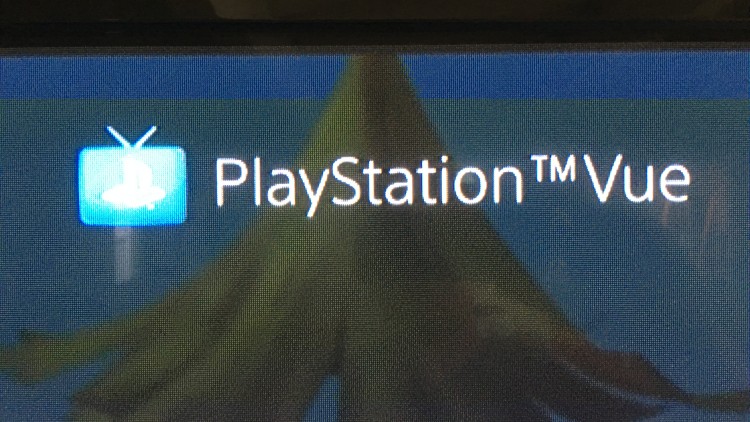
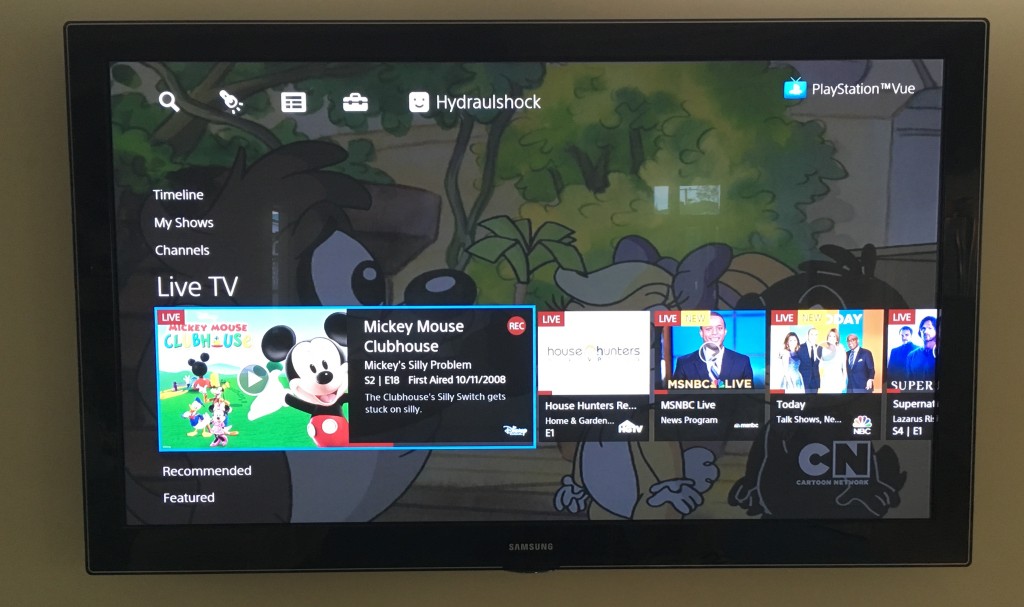
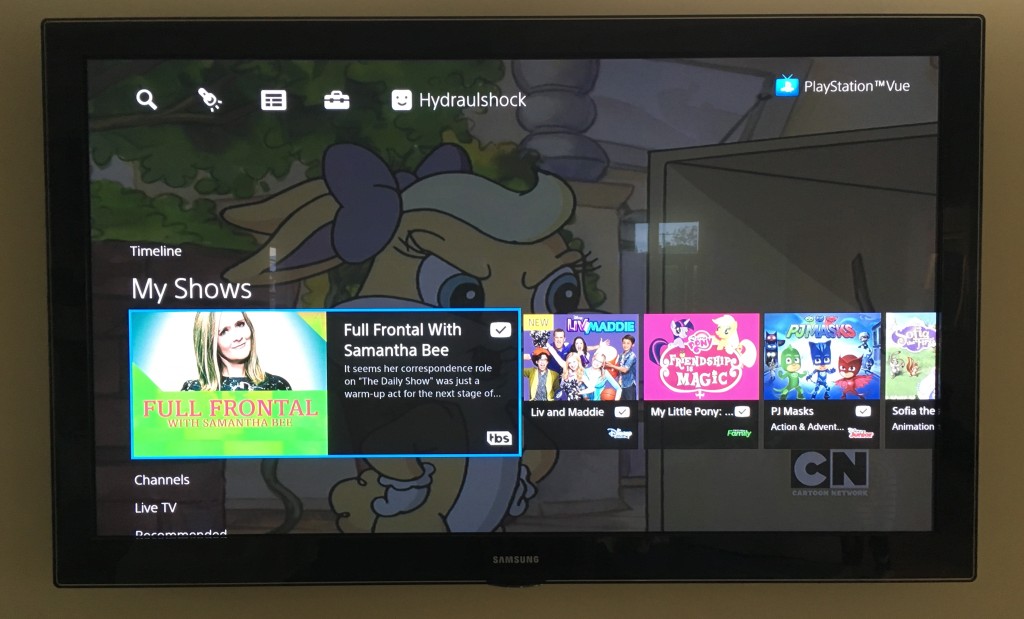
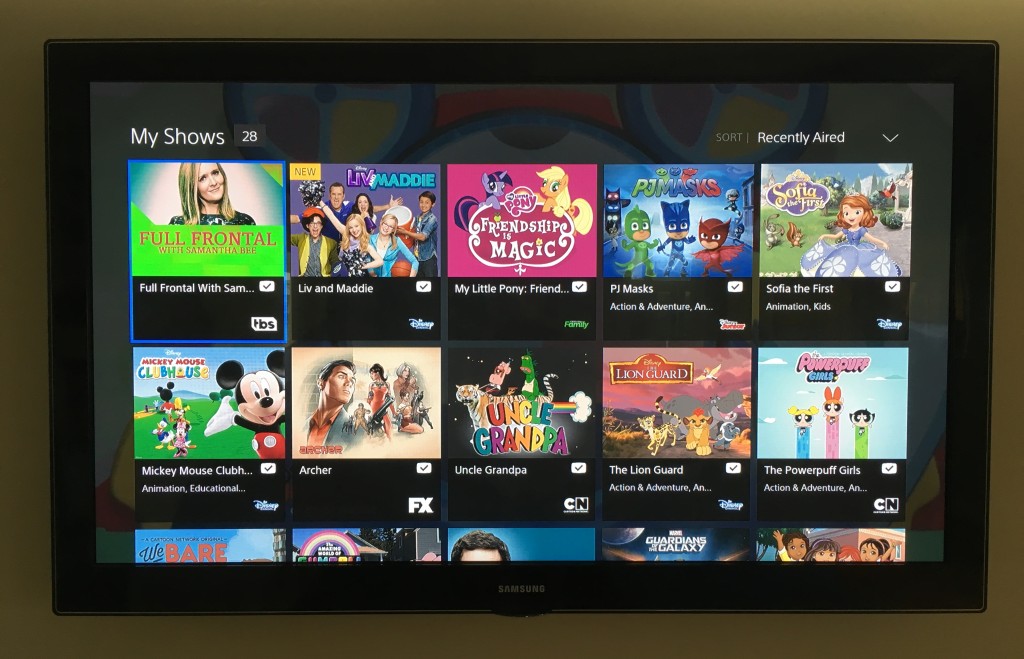

![Tech For Life [TFL] #5: The Thermos Stainless Steel King.](http://mikegullickson.com/wp-content/uploads/2015/09/IMG_7898_2-750x422.jpg)
![Tech For Life [TFL] #4: Everyone Should Own A Porsche Boxster.](http://mikegullickson.com/wp-content/uploads/2015/09/Mike_Boxster-604x422.jpg)





![Tech For Life [TEF] #3: Say No To Elephant Farts (ie, Proper Subwoofer Placement).](http://mikegullickson.com/wp-content/uploads/2014/10/activities_largemouth_bass.jpg)
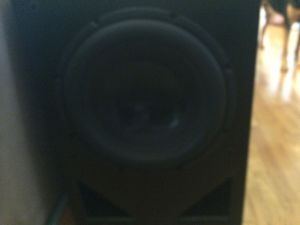

![Tech For Life [TFL] #2: Digital-to Analog-Headphone Amplifier](http://mikegullickson.com/wp-content/uploads/2014/10/AudioEngine-D1.jpg)